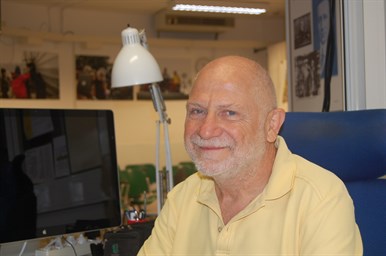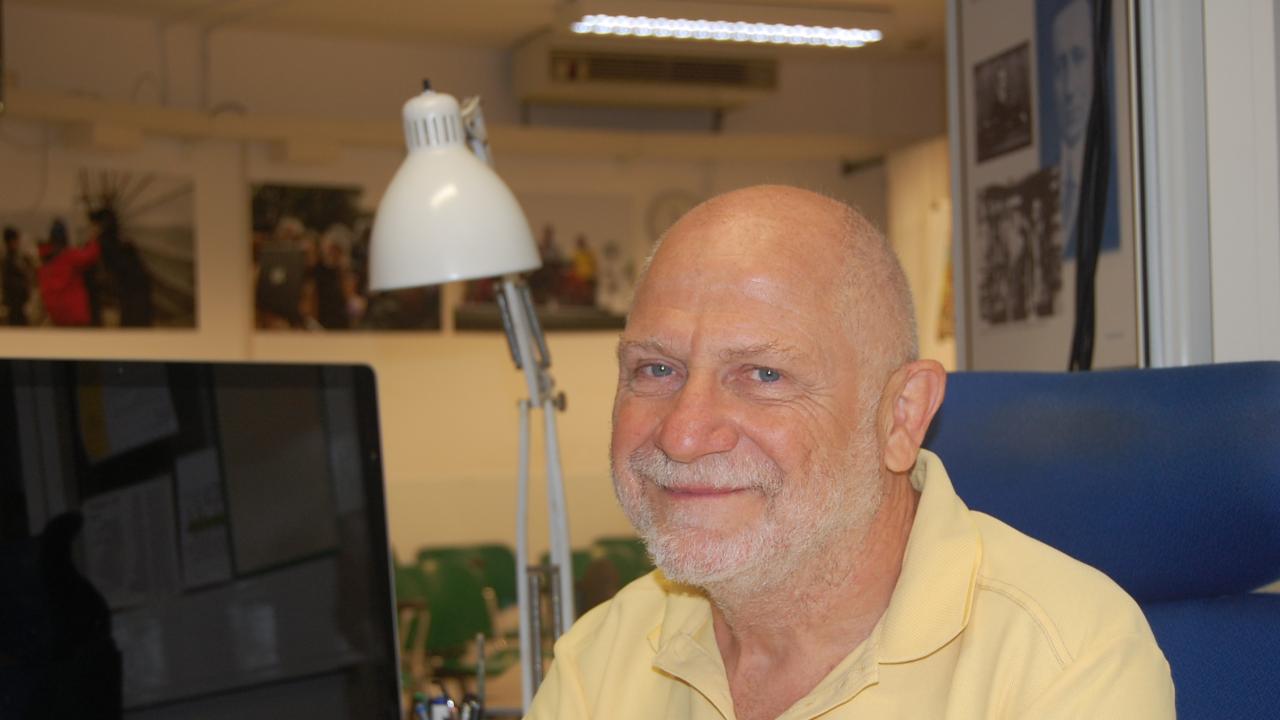
Professor Ermanno Pietrosemoli, a researcher at ICTP's Telecommunications/ICT for Development Lab since 2010, has devoted years trying to make the world a more digitally connected place for all. For his “significant contributions to providing Internet access by means of affordable wireless technologies and the training efforts to empower communities and organizations”, he has now joined the elite ranks of inductees into the Internet Hall of Fame. This recognition programme and virtual museum, launched in 2012 by the Internet Society, celebrates individuals whose extraordinary contributions have made the Internet, its worldwide availability and use, possible. This year, the award ceremony took place on 18 September in Los Angeles, during the Internet Society’s 25th anniversary celebration.
Professor Pietrosemoli grew up in Venezuela. After earning a master's degree at Stanford University, he was a professor of telecommunications at the University de Los Andes for over 30 years. He is one of the founders, and now president, of Escuela Latinoamericana de Redes (EsLaRed), a non-profit organization that has been promoting technological development in Latin America since 1992.
|
|
|
|
Professor Ermanno Pietrosemoli in his office at ICTP
|
He has worked as a telecommunications consultant for several organizations, both public and private, has been deploying wireless data communication networks focusing on low cost technology, and has participated in the planning and building of wireless data networks in Argentina, Colombia, Ecuador, Italy, Lesotho, Malawi, Mexico, Morocco, Nicaragua, Peru, Trinidad, USA and Venezuela.
ICTP science writer Anna Lombardi interviewed Professor Pietrosemoli to find out more about his career and about inequalities in the digital age, as 5.5 billion out of the world’s population has access to 3G communications while 2.5 billion are not using the Internet at all.
Professor Pietrosemoli, what countries are the least-connected today?
One is certainly Haiti, with poor Internet access in rural areas. In Africa you have connections mainly in big cities but, in countries like Malawi, the many sparsely populated areas remain isolated. Another country to mention is Indonesia: in this case, the geography of the region, with a number of small islands, hampers the establishment of good connections.
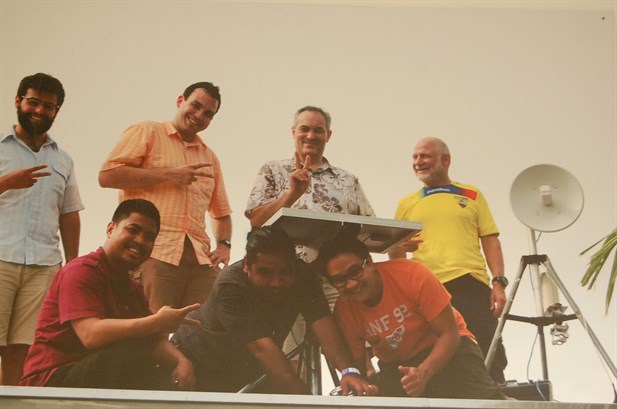 |
|
| Professor Pietrosemoli at work at the University of Guam in the Western Pacific Ocean |
In May 2017, the European Union agreed to finance 120 million euros for a three-year project which will bring free wireless connection to over 8000 isolated sites in Europe. What are the political and economical reasons that have prevented this type of resolution to be taken in the developing world?
Generally speaking, it’s related to under-estimation of the benefits accrued by telecommunications in contrast to other areas of investment. In many countries, governments haven’t devoted to Internet access the same resources they did for other technologies. So it has been the private sector that has partially filled the gap. It could sound surprising that people who earn less than 2 dollars per day are willing to pay for communications services. The truth is that our willingness to communicate is so strong that human beings can sacrifice other needs that are normally perceived as more important. On the other hand, in developing countries access to libraries and books is very limited, so the Internet is really a game changer.
What can be the impact of this for a scientist working in these countries?
I remember that to make an international phone call from my university in Venezuela, you needed to ask permission to the dean. A request to buy a book for the university library took up to three years to be fulfilled. By the time it arrived, it wasn’t up-to-date anymore. In this respect, Internet connection has been a real revolution: all of a sudden you could easily get access to scientific papers and contact colleagues around the world. Many technological developments in developing countries over the years could not be brought to fruition because of the lack of mechanisms to collaborate and present the projects to the relevant audience. The Internet has been a powerful equalizer by proving an (almost) even ground for players all over the world.
How did you become passionate about telecommunications in the first place?
My house in Venezuela is only 5 km away from the city of Merida, but there is still no telephone line there. The government had made substantial investments to bring electricity to remote villages, as they considered it crucial for the development of the entire country, but the phone service was considered a luxury. So both my wife and I obtained radio-amateur licenses and used small, hand-held radios to talk to each other. But the packet radio technology employed by radio amateurs soon caught my interest as a way to extend Internet connectivity to areas where no telephone service was available. I got a master's degree in telecommunications from Stanford in 1976 and I became professor and head of the Telecommunications Lab at the University de Los Andes in Venezuela. In the late 1980s, when computer networks started spreading, I quickly realized the potential this technology could have in many fields and I started experimenting with it. Together with other professors, we decided to link the different networks of the extended campus and connect them to the Internet. Our university was the first in Venezuela to get a direct connection by means of a VSAT antenna on the roof of our lab, with the satellite modem in my office.
How did you learn about ICTP?
In 1990, two of my colleagues attended an international school of computer networks held at ICTP, in Trieste. Back in Venezuela, they decided to do something similar at our own university. I was very skeptical at first: we had no money, no equipment, no external contacts, no political support, it seemed all a pipe dream. But in 1992 I got involved in the preparation of the second school of computer networks organized by ICTP, and during the school I made contacts with some of the speakers and I convinced some of them to come to Venezuela as instructors for our school. Among them Alvise Nobile, Claudio Allocchio, Ben Segal and Randy Bush. Our first “Escuela Latinoamericana de Redes (EslaRed) – Latin American Networking School” took place at the end of the same year. It was aimed at professors and experts from universities in Latin America, to provide them training and networking. It was a great success, with participants from ten countries. In 1998 we got the support of the Internet Society to export these training activities beyond Venezuela’s borders. Today EslaRed is a key training event in the region and will celebrate its 25th anniversary in November at a training event in San Salvador in which seven concurrent workshops will cover different aspects of computer networks.
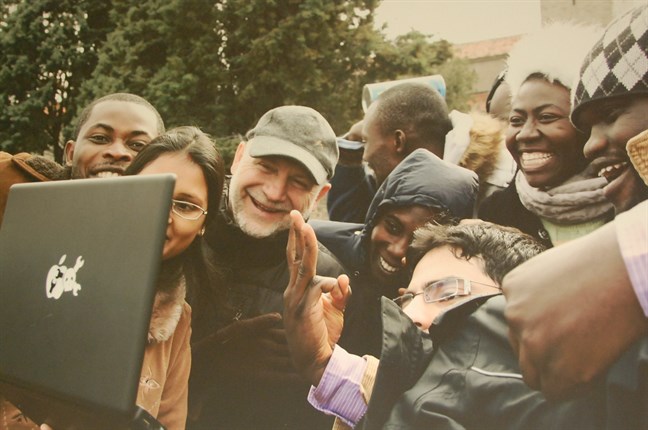 |
|
| Professor Pietrosemoli holding a training session in Trieste (Italy) |
Are there any concrete outcomes from EslaRed over its first 25 years?
One of the most important results has certainly been the decision of some of our attendees to form the Latin American and Caribbean Internet Addresses Registry (LACNIC), in 2002. For the first time, this organization could directly manage Internet domain assignments in South America, as North America used to have full control before. Beyond gaining independence for the region, LACNIC has also dramatically contributed to its technological development, through an active cooperation policy and support of training activities.
How has your collaboration with ICTP continued?
Over the years, I have been invited to participate in many of its activities. In 1995, for example, ICTP was providing Internet access to the University of Ile-Ife in Nigeria. There was a need to share this link among three different buildings of the campus. To assess the available options for this, Alvise Nobile and Sandro Radicella from ICTP decided to create an international task force of experts coming from Venezuela, Nigeria and Philippines. We worked together for five weeks over the summer to refine the project. Optical fibers seemed to be the best approach. Instead, I suggested a wireless approach similar to the one we had implemented in our university, which proved very successful and was later adopted elsewhere as a cost effective solution for campus interconnections. In the following years, I have been collaborating with ICTP colleagues, especially Carlo Fonda and Marco Zennaro, to conduct training and deployments of wireless systems in many countries. We have also investigated the feasibility of low-cost, long-distance media for Internet access and community networking: in 2007, together with Carlo Fonda, we broke the world record for the longest transmission of a WiFi signal, 382 kilometers in Venezuela, which has not yet been surpassed. In 2010, after retiring from my university in Venezuela, I was offered to collaborate full time with ICTP.
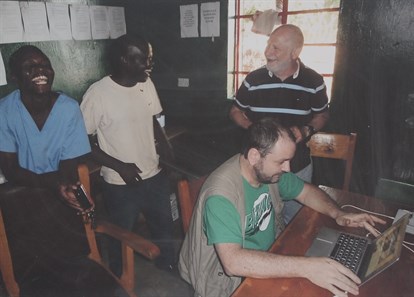 |
|
|
Professor Pietrosemoli and Carlo Fonda in Blantyre (Malawi)
|
|
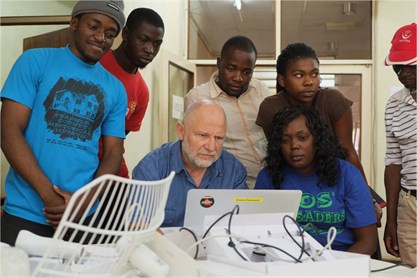 |
|
| Professor Pietrosemoli in Zomba (Malawi) |
You have conducted wireless networking training in Benin, Indonesia, Kenya, Malawi, Mozambique, Mauritius, Rwanda, Spain, USA and Zambia. What are the main advantages of this type of connection?
Long-distance Wi-Fi links represent a practical and inexpensive alternative for providing network connectivity and access to the Internet. It has allowed us to dramatically improve the working conditions in many schools, hospitals and community centers in developing countries all over the world. In the summer of 2008, for example, we connected the University of Malawi College of Medicine in Blantyre (Malawi) with the Mangochi Hospital, which allowed doctors to share all the available data on patients with malaria or AIDS. In 2010 we extended this connection to a hospital which was so isolated that there were no doctors working there but only a few nurses who had to cycle up to 30 kilometers to send a simple email. In 2012 we provided connectivity to a school in the middle of an atoll in Chuuk, Micronesia.
What are the costs for these types of connections?
When we started doing these interventions, radios and antennas represented the most expensive part. Thanks to technological development and to the competition of manufacturers, costs have decreased significantly over the years. Nowadays, the electronic components are really cheap but the cost of infrastructures remains high: to set a long distance connection you need high towers to overcome obstacles along the way. Unfortunately, these costs are not flexible. Governments could help by setting incentives for mobile phones operators to share existing towers and allow other organizations to install antennas on them. So far, though, economical interests have interfered with this solution.
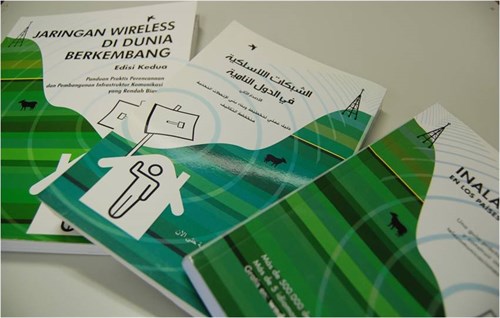 |
|
You are among the authors of the book “Wireless Networking in the Developing World”, already translated in Spanish, Arabic, French, Indonesian, Portuguese and Bhutanese. Why is so important for people to learn this type of technology?
Our goal is not just to train experts with a scientific or technological background, but also common people. We want them to learn how to use low-cost technological solutions to implement their own networks, which will empower them also to perform the maintenance required for its sustainability. This is why we decided to write this book: we provide practical tips on how to build and install antennas, how to measure the performance of the system, and there is also a section on renewable energies. It’s crucial, particularly in developing countries, that people understand that this kind of technology is something they can master and do themselves.
What are the projects you are currently working on?
There will be a training event in November in El Salvador. Together with Marco Zennaro, we are organizing several workshops on specific aspects: wireless technology, internet of things, network management, cloud computing, virtualization and computer networks security. All other instructors will come from Latin America as an outcome of many years of providing this kind of training.
Find out more about Professor Pietrosemoli's induction into the Internet Hall of Fame, listen to his acceptance speech and read his full profile on the Internet Hall of Fame website.
---- Anna Lombardi

















